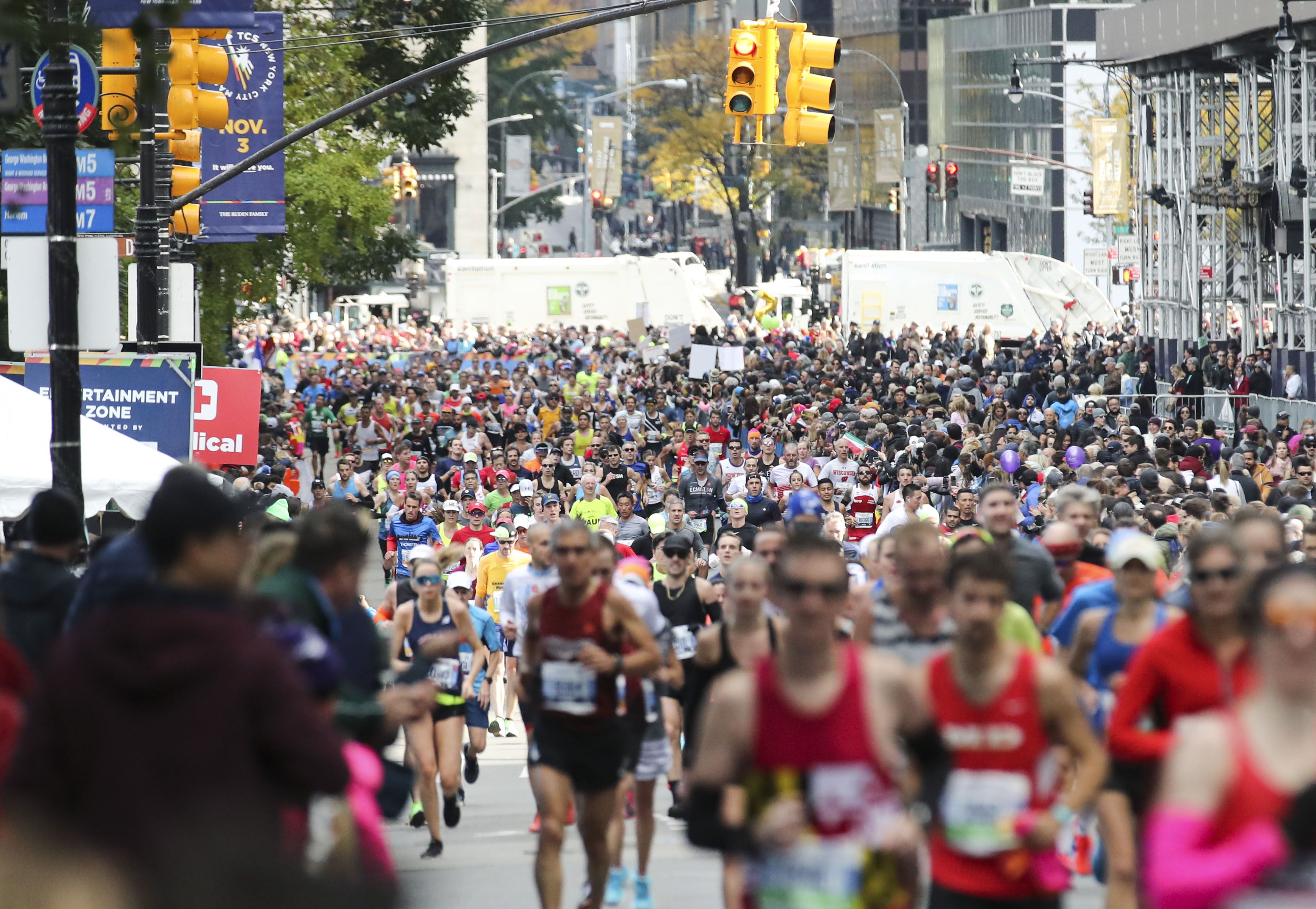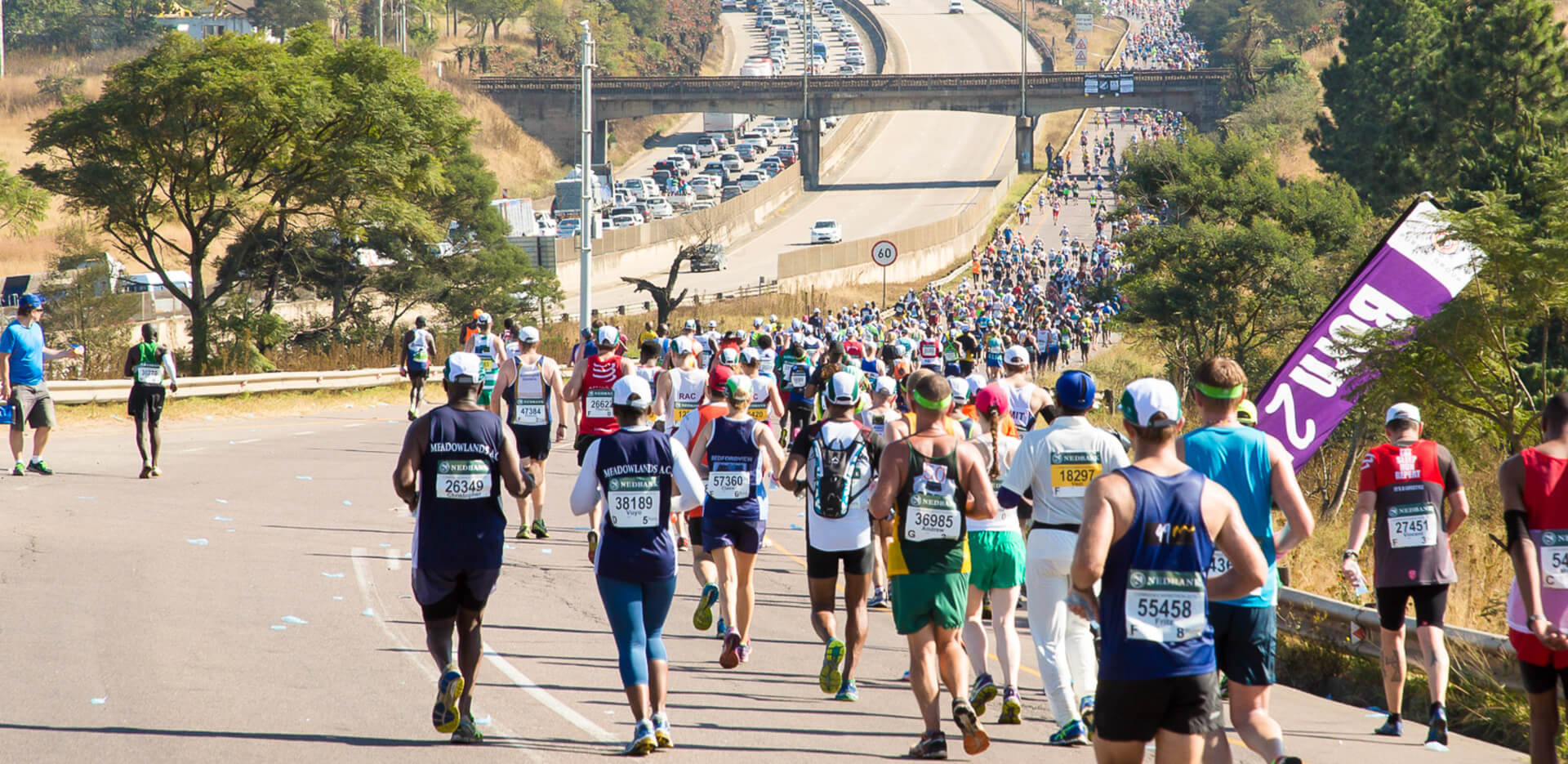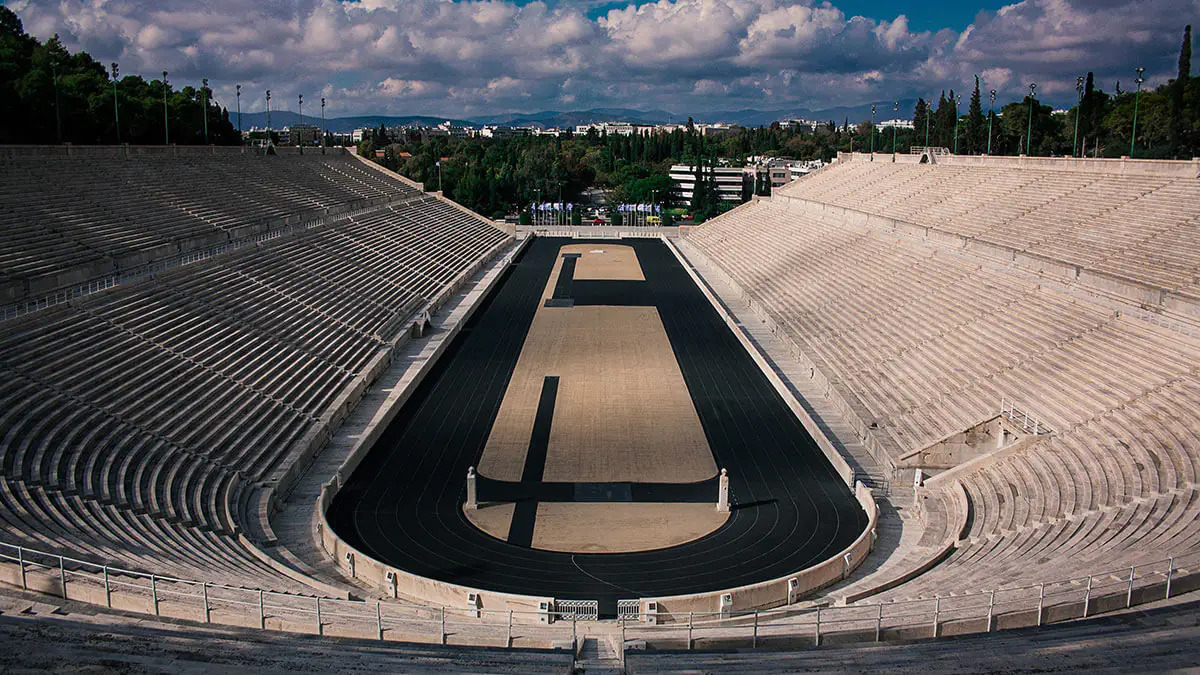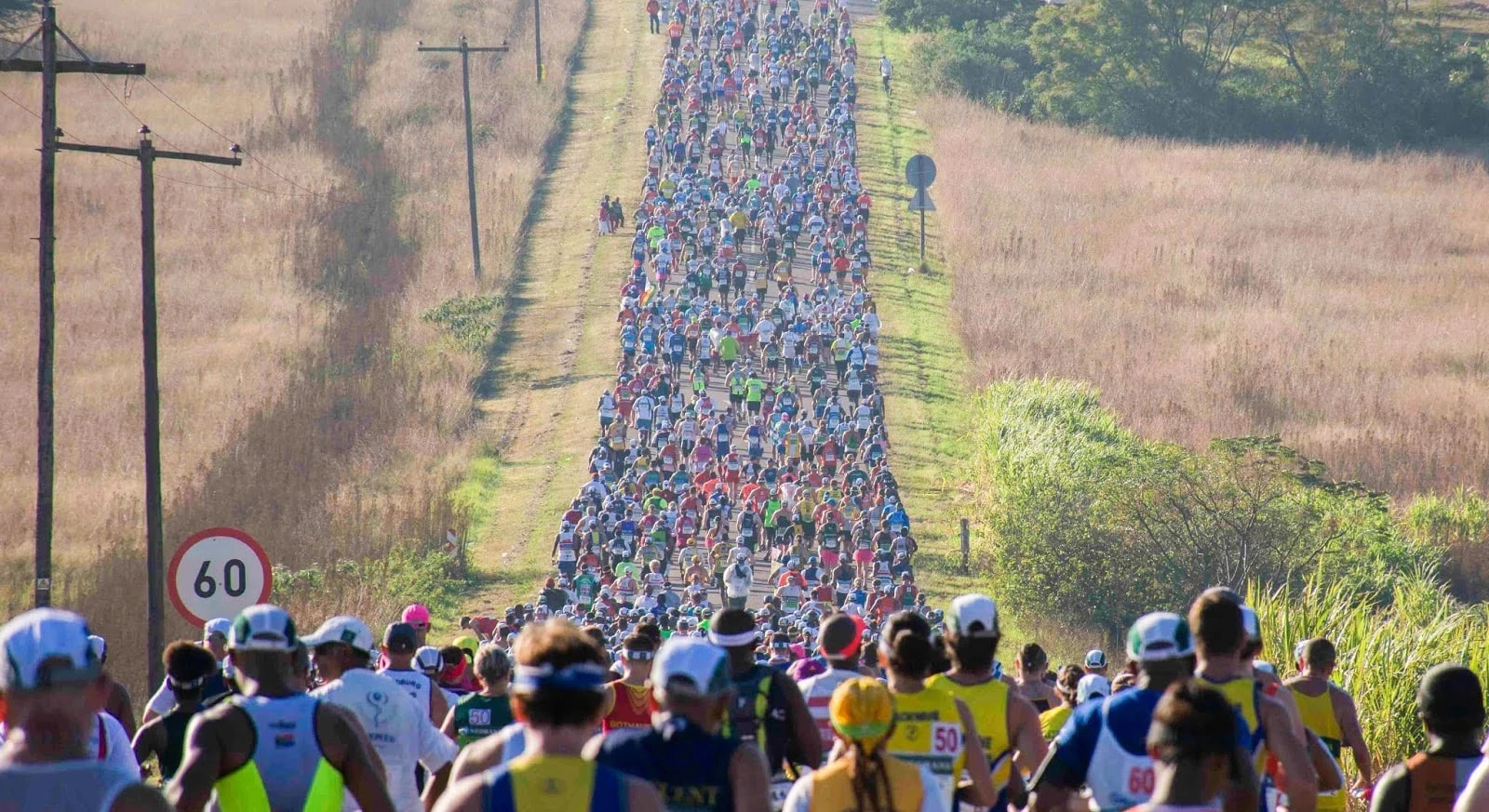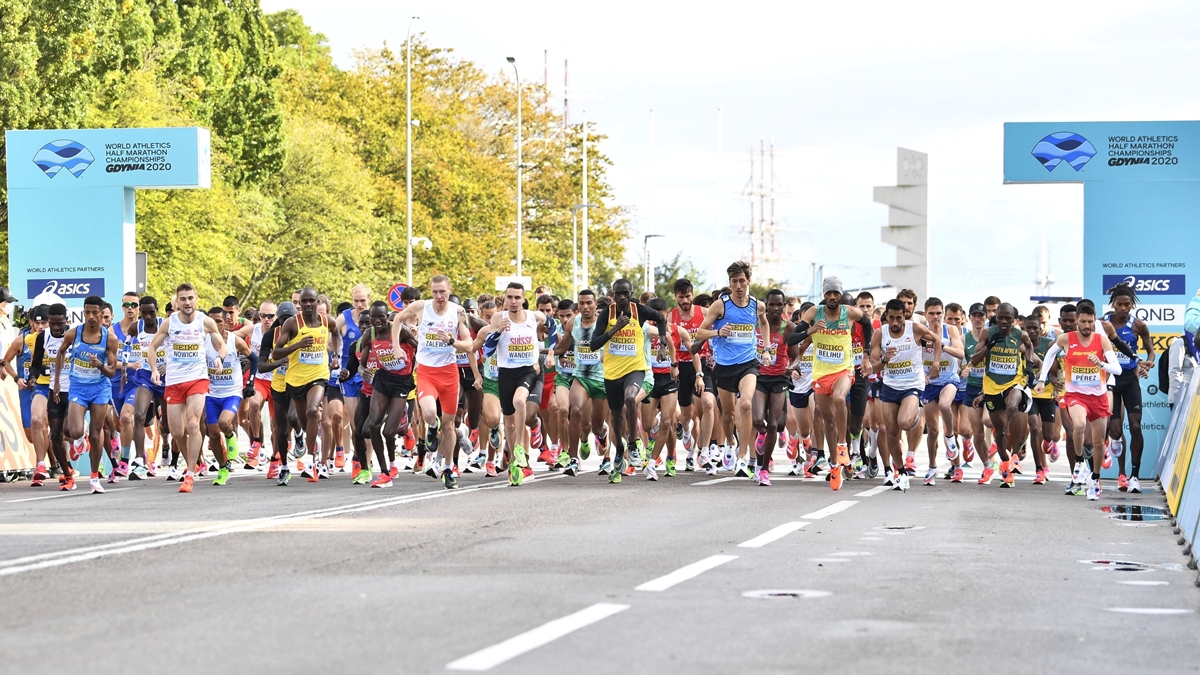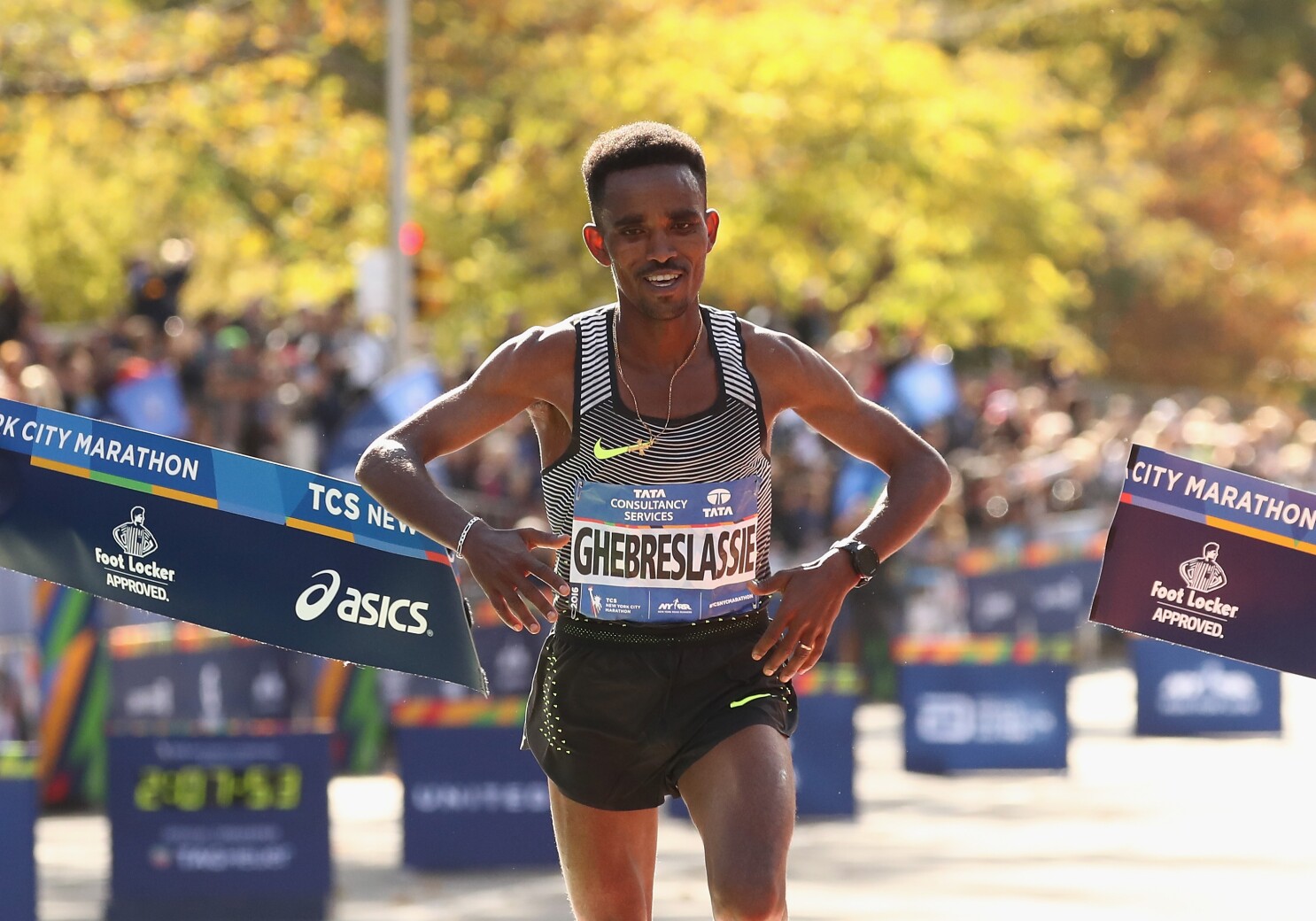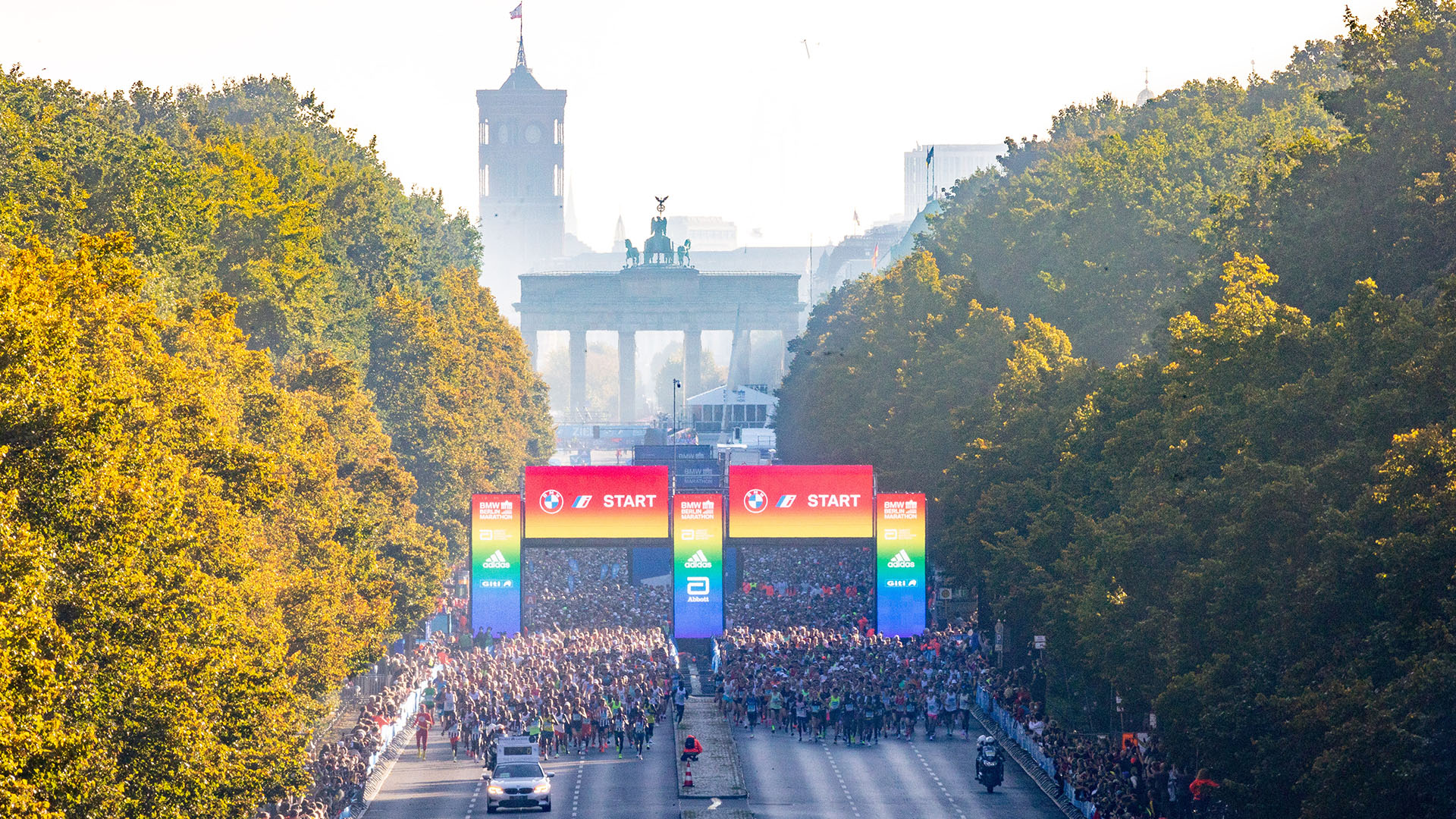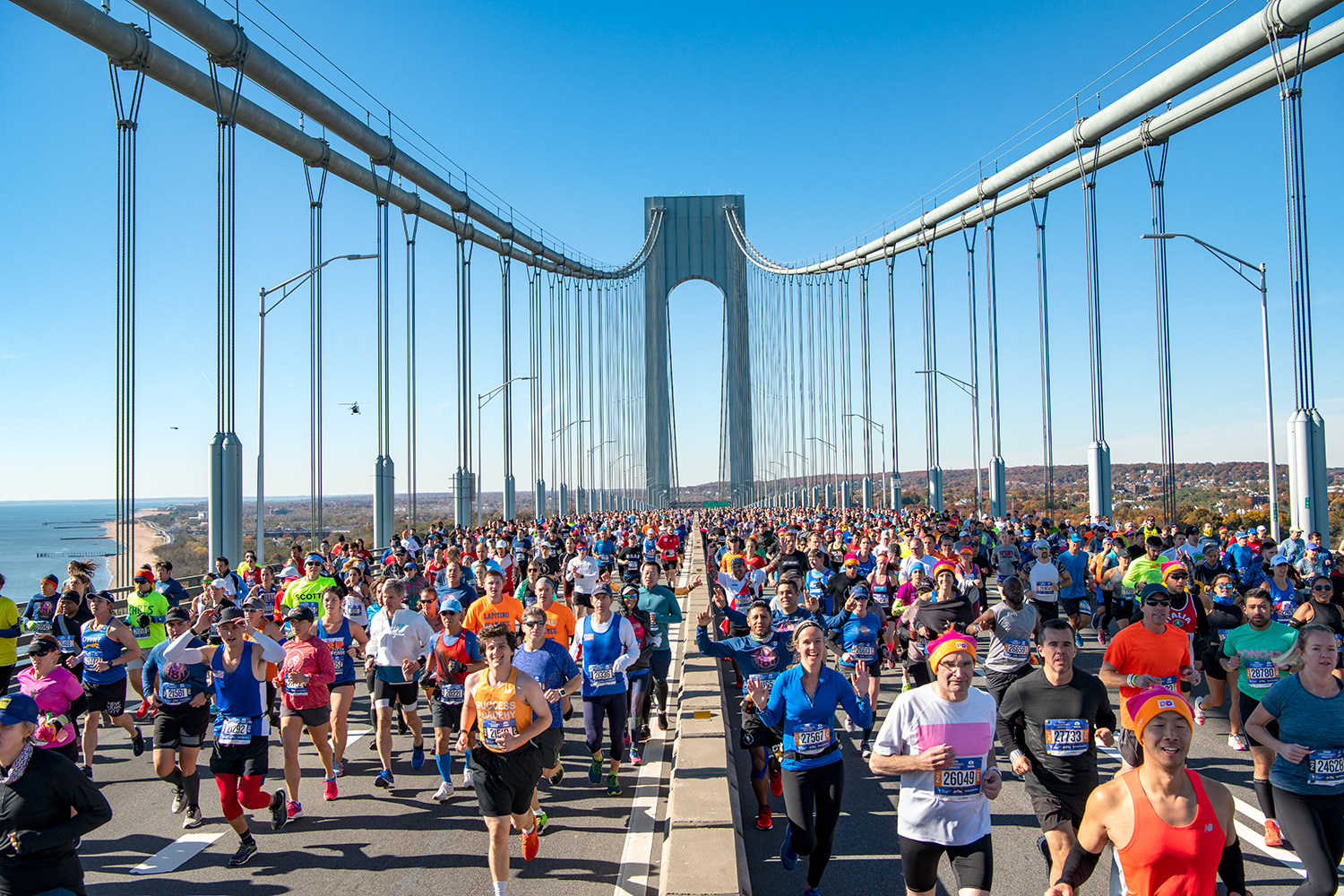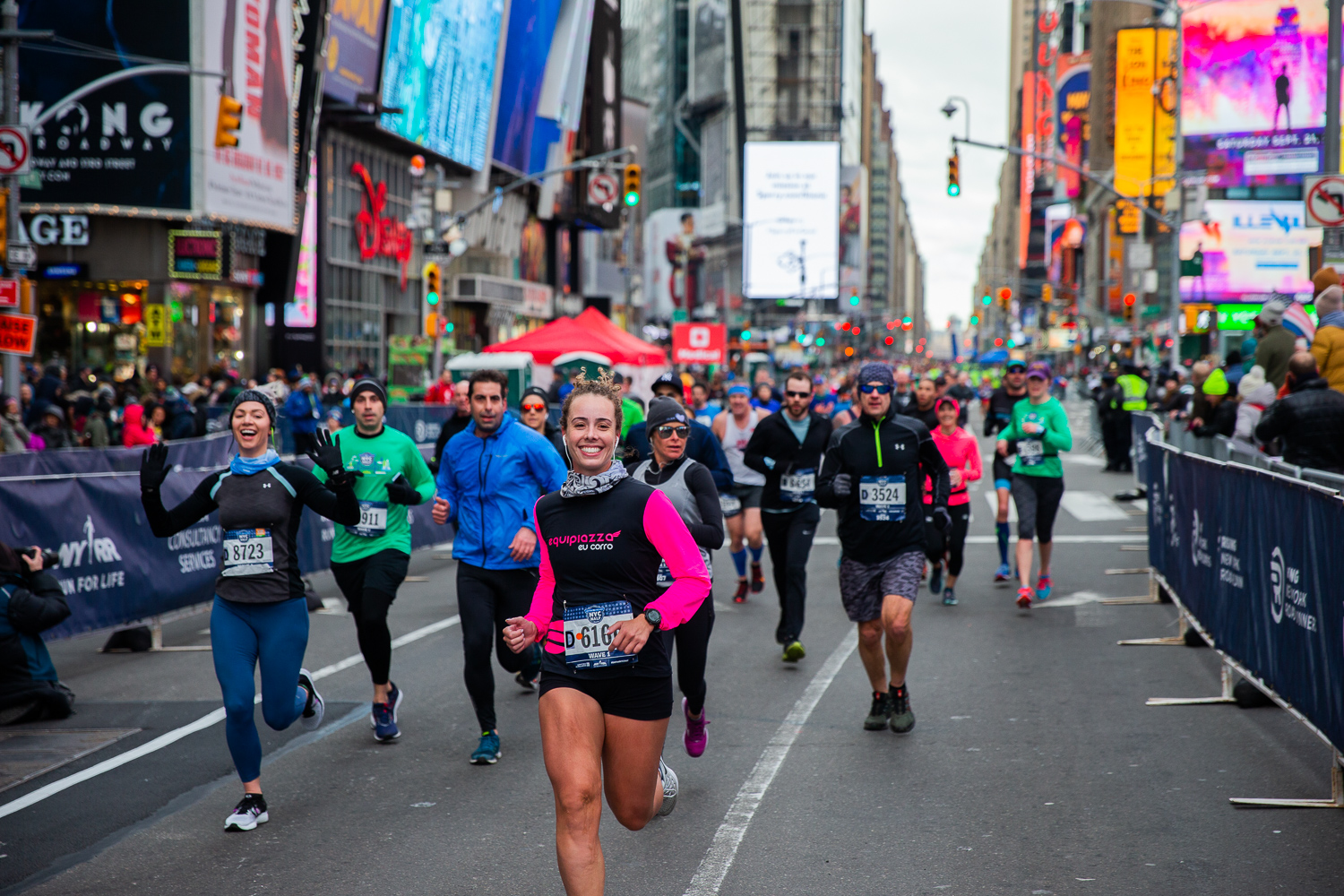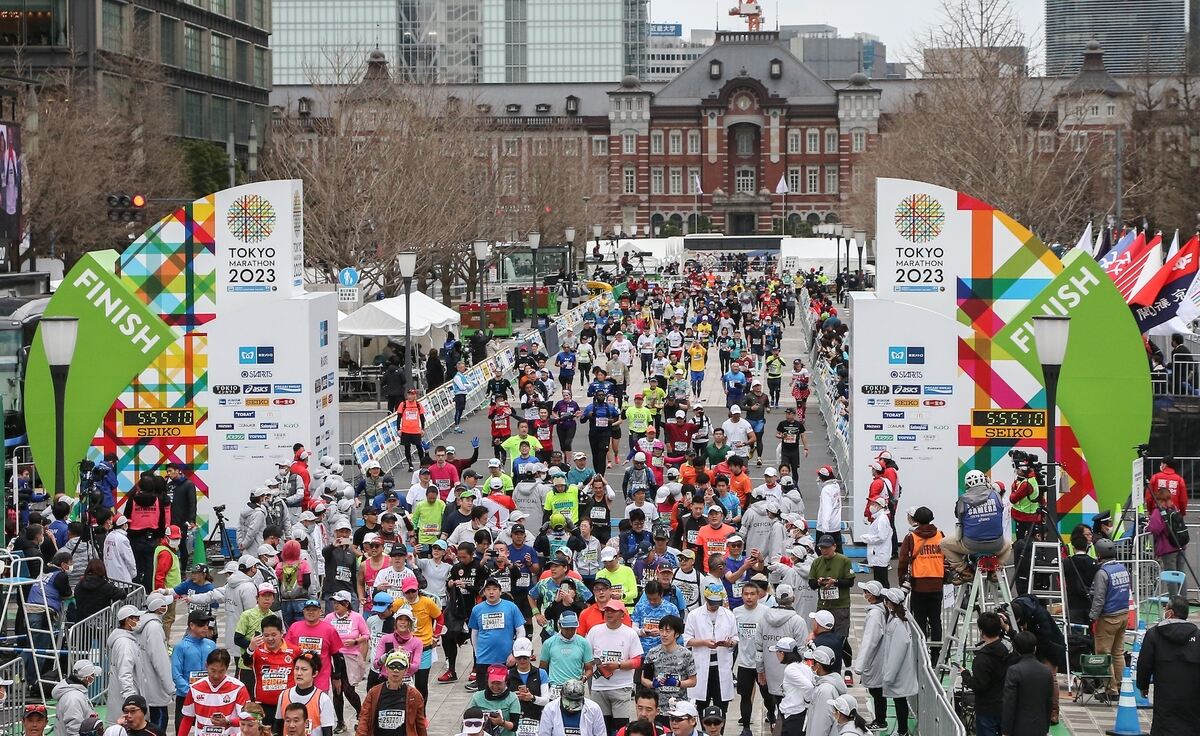

Featured
When Is The Tokyo Marathon
Modified: January 2, 2024
Discover the dates for the featured Tokyo Marathon event and plan your trip accordingly. Don't miss out on this extraordinary race in the heart of Japan!
Introduction
Welcome to the exciting world of the Tokyo Marathon! This prestigious event, held annually in the vibrant city of Tokyo, is one of the most anticipated marathons in the world. Runners from across the globe gather to test their endurance, showcase their skills, and experience the unique blend of tradition and modernity that Tokyo has to offer.
The Tokyo Marathon is not just a race; it is a celebration of the human spirit, determination, and camaraderie. Whether you are a seasoned runner looking for a new challenge or a first-timer ready to embark on a thrilling adventure, this event promises an unforgettable experience.
As the largest marathon in Asia and one of the six World Marathon Majors, the Tokyo Marathon attracts elite athletes, enthusiastic amateurs, and avid supporters alike. The atmosphere on race day is nothing short of electric, with thousands of cheering spectators lining the streets, creating an energetic and motivating environment.
In this article, we will delve into the rich history of the Tokyo Marathon, explore the course and route, discuss the weather conditions to expect on race day, highlight the registration and entry requirements, introduce the elite runners to watch out for, provide information about the award categories, and offer valuable tips for spectators who want to enjoy the event.
Whether you are planning to participate in the marathon or simply want to soak in the excitement as a spectator, this article will serve as your comprehensive guide to all things Tokyo Marathon. So, lace up your running shoes or grab your spot along the sidelines, because the Tokyo Marathon is about to take you on an incredible journey!
History of the Tokyo Marathon
The Tokyo Marathon has a rich history that dates back to 2007 when it was first held as a full marathon. However, the roots of the event can be traced back to the establishment of the Tokyo International Marathon in 1981, which initially included both a full marathon and a half marathon.
Since its inception, the Tokyo Marathon has quickly grown in popularity and stature, attracting elite runners from around the world. It was designated as a World Marathon Major in 2013, joining the ranks of other prestigious marathons such as the Boston Marathon, the London Marathon, and the New York City Marathon.
The race has witnessed remarkable performances over the years, with marathoning legends etching their names in the history books. The course record for men was set by Wilson Kipsang of Kenya in 2017, finishing the race with a blistering time of 2 hours, 3 minutes, and 58 seconds. The women’s course record is held by Birhane Dibaba of Ethiopia, who completed the race in a phenomenal time of 2 hours, 19 minutes, and 51 seconds in 2018.
One of the most memorable moments in the history of the Tokyo Marathon came in 2012 when it was selected as the official test event for the Olympic Games. Runners had the unique opportunity to experience the race on the same course that would be used for the upcoming Olympic competition.
The Tokyo Marathon has also played a significant role in promoting charitable causes. The charity program, known as the Tokyo Marathon Charity, was launched in 2007 and has since raised millions of dollars for various charitable organizations.
Throughout its history, the marathon has continuously evolved, incorporating new features and improvements to enhance the experience for participants and spectators. With an emphasis on precision, organization, and meticulous planning, the Tokyo Marathon has established itself as one of the most well-executed marathons in the world.
In the next section, we will explore the exciting course and route of the Tokyo Marathon, providing insights into what runners can expect as they make their way through the iconic streets of Tokyo.
Course and Route
The Tokyo Marathon boasts a captivating course that takes participants on a journey through the vibrant and picturesque city of Tokyo. From the starting point at the Tokyo Metropolitan Government Building in Shinjuku, to the exhilarating finish at the Tokyo Big Sight in Koto City, runners will experience the city’s rich cultural heritage and modern landmarks.
The course is known for its relatively flat and fast terrain, making it attractive to both professional runners and amateurs looking to achieve a personal best. It takes runners through iconic neighborhoods such as Shinagawa, Ginza, and Asakusa, offering a diverse mix of urban landscapes and traditional architecture.
As participants make their way through the course, they will pass notable landmarks such as the Imperial Palace, Tokyo Tower, and the Asakusa Kaminarimon Gate. These landmarks not only provide breathtaking backdrops but also serve as motivation for runners, reminding them of the incredible city they are conquering.
One particularly exciting feature of the Tokyo Marathon is the route’s unique layout. Unlike traditional marathons with a single loop or a point-to-point course, the Tokyo Marathon incorporates multiple loops and out-and-back sections. This design allows spectators to cheer on their favorite runners at multiple points throughout the race and enables participants to soak in the energy of the crowd.
Another noteworthy aspect of the course is the aid stations strategically placed along the route. These stations provide water, energy drinks, and other refreshments to keep runners hydrated and energized. Medical support is also readily available, ensuring the safety and well-being of participants.
Overall, the course and route of the Tokyo Marathon are carefully planned to showcase the best of Tokyo while challenging runners to push their limits. With its mix of scenic beauty, diverse neighborhoods, and iconic landmarks, the Tokyo Marathon course offers a memorable and inspiring experience for all who take part.
In the following section, we will explore the weather conditions that runners can expect on race day and how to prepare accordingly.
Weather Conditions
The weather conditions on race day can have a significant impact on the Tokyo Marathon experience. As a late winter event, the marathon takes place in February, where Tokyo experiences cool temperatures and variable weather patterns.
On average, the temperature in Tokyo during February ranges between 5 to 12 degrees Celsius (41 to 54 degrees Fahrenheit). However, it is important to note that weather conditions can vary, and participants should be prepared for different scenarios.
While February in Tokyo is generally cold, runners should be aware that it can also be accompanied by rain or even snow. Therefore, it is crucial to check the weather forecast leading up to the race day and come prepared with appropriate clothing and gear.
To brave the elements, participants are advised to dress in layers that can be easily adjusted throughout the race. Wearing a moisture-wicking base layer, a long-sleeved shirt, and a lightweight waterproof jacket can help maintain body temperature and protect from rain or drizzle.
Additionally, having a hat or headband, gloves, and a thin pair of thermal socks can provide extra comfort and warmth during the marathon. It is essential to remember that as the race progresses, body temperature increases, so being able to shed layers without losing valuable time is crucial.
Furthermore, staying hydrated is essential regardless of the weather conditions. Cold weather can sometimes mask the body’s need for fluids, so runners should make a conscious effort to drink plenty of water and electrolyte-replacing fluids during the race.
The Tokyo Marathon organizers prioritize the safety and well-being of participants. In the event of extreme weather conditions, such as heavy snowfall or strong gusts of wind, race officials may adjust or cancel certain sections of the course to ensure the safety of all participants.
By being prepared for varying weather conditions and making necessary adjustments to their race plans and attire, runners can overcome any challenges and have a successful and enjoyable Tokyo Marathon experience.
In the next section, we will explore the registration process and entry requirements for the Tokyo Marathon.
Registration and Entry Requirements
Participating in the Tokyo Marathon requires careful planning and adherence to the registration process and entry requirements. Due to its immense popularity, entry into the marathon is highly competitive, with a limited number of spots available for both Japanese and international runners.
The registration for the Tokyo Marathon typically opens a few months prior to the race day and is conducted online through the official marathon website. It is important to keep an eye on the registration dates and be prepared to secure a spot as soon as it becomes available, as registrations tend to fill up quickly.
There are two main entry methods for the Tokyo Marathon: general entry and charity entry. The general entry is available to both Japanese and international runners through a lottery system. Interested participants should submit their application during the registration period and wait for the lottery results to be announced.
The charity entry, on the other hand, provides an opportunity for runners to secure a spot while also raising funds for designated charities. This entry method often requires participants to commit to a fundraising goal, which varies depending on the chosen charity.
It is important to note that the Tokyo Marathon has certain entry requirements that participants must meet. For the general entry, runners must be at least 19 years old on the race day and have completed a full marathon within the specified time limit. The qualifying times vary based on age and gender.
For international runners, additional requirements may apply, such as applying through an official tour agent or completing a designated international race to validate their eligibility for the Tokyo Marathon.
Once successfully registered, participants will receive a race packet containing their bib number, timing chip, and important race information. This packet can be picked up at the Tokyo Marathon Expo, a pre-race event where participants can also explore various running-related exhibits and purchase official merchandise.
In summary, securing a spot in the Tokyo Marathon requires careful planning, timely registration, and adherence to the entry requirements. By understanding the registration process and meeting the necessary criteria, participants can have the opportunity to be a part of this extraordinary marathon experience.
In the next section, we will introduce the elite runners who have made their mark in the Tokyo Marathon’s history.
Elite Runners
The Tokyo Marathon attracts some of the world’s finest elite runners, who compete fiercely for top honors and course records. These athletes are not only incredibly talented and dedicated but also serve as an inspiration to all participants and spectators.
Over the years, the Tokyo Marathon has seen the participation of many renowned runners who have left an indelible mark on the event’s history. From course records to nail-biting finishes, these athletes have provided spectators with thrilling and unforgettable moments.
In the men’s division, notable elite runners include Wilson Kipsang of Kenya, who set the course record with a remarkable time of 2 hours, 3 minutes, and 58 seconds in 2017. Other prominent marathoners such as Dickson Chumba, Birhanu Legese, and Yuta Shitara have also had strong showings in previous editions of the Tokyo Marathon.
In the women’s division, Ethiopian runner Birhane Dibaba holds the women’s course record, finishing the race in a staggering time of 2 hours, 19 minutes, and 51 seconds in 2018. She has demonstrated exceptional endurance and speed, setting a new standard for female runners in Tokyo.
Additionally, Japanese athletes have made a significant impact on the Tokyo Marathon, with runners like Yuta Shitara and Suguru Osako showcasing their prowess on the international stage. These athletes bring an extra level of excitement to the event, as locals cheer for their homegrown talent.
The Tokyo Marathon also attracts a host of other elite runners from around the world, including Olympians and winners of other major marathons. Their presence adds a competitive edge and elevates the race to a truly global event.
Each year, spectators eagerly watch out for these elite runners, marveling at their speed, endurance, and determination. Their performances serve as a reminder of the extraordinary human capabilities and inspire participants to push their own limits.
Whether it is breaking records, achieving personal bests, or simply enjoying the spirit of competition, the elite runners at the Tokyo Marathon continue to enthral and captivate audiences year after year.
In the next section, we will explore the different award categories and the recognition given to participants at the Tokyo Marathon.
Award Categories
The Tokyo Marathon recognizes and celebrates the achievements of participants across various award categories. These categories not only honor the elite runners but also acknowledge the determination and effort of runners across different age groups and abilities.
First and foremost, the overall winners of the Tokyo Marathon, both in the men’s and women’s divisions, receive well-deserved recognition for their exceptional performances. The top finishers, based on official gun time, are awarded the coveted titles of Tokyo Marathon champions.
In addition to the overall winners, the Tokyo Marathon also acknowledges the top finishers in specific age group categories. These age categories ensure that participants of all ages have the chance to compete against their peers and be recognized for their achievements. It is inspiring to see runners in their respective age groups pushing their limits and achieving personal milestones.
Furthermore, the Tokyo Marathon awards top honors to Japanese runners specifically. Recognizing the support and enthusiasm from the local community, the top Japanese male and female runners, referred to as the fastest Japanese runners, receive special recognition for their outstanding performances.
Another award category that holds immense significance is the wheelchair division. The Tokyo Marathon welcomes and celebrates the participation of wheelchair athletes, who navigate the course with exceptional skill and determination. The fastest male and female wheelchair participants are acknowledged for their remarkable athleticism and serve as an inspiration to all.
Aside from the competitive awards, the Tokyo Marathon also recognizes participants who contribute to charitable causes through the charity entry method. These individuals, often referred to as charity runners, put in tremendous effort not only to train for the marathon but also to raise funds for designated charity organizations. Their commitment to both running and giving back is truly commendable.
It is worth noting that the Tokyo Marathon awards not only the top finishers but also values the spirit of participation and sportsmanship that each runner brings to the event. Every participant, regardless of their finishing position, should feel a sense of accomplishment and pride in completing the marathon.
With its wide range of award categories, the Tokyo Marathon ensures that participants from all walks of life have the opportunity to be acknowledged for their achievements and contributions. This inclusivity and recognition are integral to the marathon’s ethos and make it a truly special event.
In the next section, we will provide valuable information for spectators who plan to cheer on the runners during the Tokyo Marathon.
Spectator Information
As the Tokyo Marathon is not just a race but also a vibrant and exciting spectacle, being a spectator can be an exhilarating experience. Whether you’re supporting a friend or family member, or simply there to soak up the electrifying atmosphere, here’s some valuable information to enhance your spectator experience.
The Tokyo Marathon offers numerous vantage points throughout the course where spectators can cheer on the runners. Popular spots include the start and finish areas, as well as key landmarks such as the Imperial Palace, Tokyo Tower, and Asakusa Kaminarimon Gate. It’s a good idea to familiarize yourself with the race route in advance and choose your preferred viewing locations.
Arriving early is key to securing a prime spot along the course. As the marathon gains popularity each year, the streets get crowded with enthusiastic supporters. By arriving ahead of time, you can find a comfortable spot with good visibility to watch the race unfold.
Another essential tip is to bring signs, banners, and flags to show your support. These personalized messages will not only cheer on your favorite runners but also make the experience memorable for them. Remember to respect the guidelines provided by race officials regarding the size and placement of signs to ensure everyone’s safety and enjoyment.
Be prepared with cheering materials such as noisemakers, tambourines, or even musical instruments. The Tokyo Marathon is known for its vibrant and energetic atmosphere, and your cheers and applause will provide an extra boost of motivation for the participants as they tackle the course.
Additionally, consider bringing snacks, drinks, and a comfortable portable chair or mat. The marathon can be a long event, and having food and drinks on hand will keep you energized. Finding a comfortable spot to sit or stand will allow you to fully enjoy the excitement without getting fatigued.
Lastly, make sure to familiarize yourself with the public transportation options around the race course. Tokyo has an extensive subway system, and planning your travel in advance will help you navigate the city and arrive at your desired spectator spot on time.
Remember to be respectful of the runners, other spectators, and race officials. Stay off the course, follow any instructions given by personnel, and be mindful of those around you. By creating a positive and supportive environment, you can contribute to an amazing race day experience for everyone involved.
So, get ready to cheer, wave, and show your support as the runners race through the streets of Tokyo. Your enthusiasm and encouragement will undoubtedly leave a lasting impact on the participants and make the Tokyo Marathon an unforgettable event.
In the next section, we will explore the Tokyo Marathon Expo and the exciting activities that take place leading up to race day.
Tokyo Marathon Expo
The Tokyo Marathon Expo is an integral part of the race experience, offering participants and spectators a myriad of activities and exhibits leading up to race day. This pre-race event is held a few days before the marathon and serves as an exciting hub for all things related to the Tokyo Marathon.
The Tokyo Marathon Expo showcases various exhibitors, merchandise stands, and presentations relating to running, fitness, and sports equipment. It provides an opportunity for participants to explore the latest running gear, apparel, and accessories from renowned brands, as well as discover new products and innovations in the running industry.
In addition to the bustling market, the Expo also features informative sessions and presentations by experts in the field of running and endurance sports. These sessions cover a wide range of topics, from nutrition and training tips to injury prevention and race strategies. Participants can gain valuable insights from industry professionals and enhance their overall marathon experience.
One of the highlights of the Tokyo Marathon Expo is the race packet pickup. Once participants have registered, they can collect their race packets, which typically include the bib number, timing chip, and other essential race information. This process is streamlined and efficient, ensuring that all registered runners are well-prepared for race day.
Furthermore, the Tokyo Marathon Expo serves as a central meeting point for runners to connect with fellow participants, share experiences, and soak in the pre-race buzz. It provides a sense of camaraderie and excitement as runners from around the world gather to celebrate their shared passion for long-distance running.
The expo also offers a variety of food and refreshment options to keep participants fueled and hydrated. From energy bars and drinks to local delicacies, there is something to satisfy every craving and provide the necessary sustenance for runners as they gear up for the marathon.
Participants and spectators alike can also find official Tokyo Marathon merchandise to commemorate their experience. From t-shirts and caps to commemorative medals and souvenirs, these items are a tangible reminder of the momentous occasion. Purchasing official merchandise not only allows individuals to show their support but also contributes to the sustainability and continued success of the Tokyo Marathon.
Visiting the Tokyo Marathon Expo is an excellent way to immerse yourself in the marathon atmosphere, connect with fellow enthusiasts, and soak in the excitement leading up to race day. Whether you’re a participant looking for necessary race information or a spectator wanting to explore the running world, the Expo offers a dynamic and engaging experience for all.
In the next section, we will wrap up our comprehensive guide to the Tokyo Marathon with a summary and final thoughts.
Conclusion
The Tokyo Marathon is not just a marathon; it is a captivating journey that combines athletic prowess, cultural immersion, and a vibrant celebration of the human spirit. From its rich history to its iconic course, the Tokyo Marathon offers an experience like no other.
For runners, it is a chance to challenge personal limits, achieve remarkable milestones, and be part of a global community united by a love for running. The course and route take participants through a mesmerizing blend of traditional and modern Tokyo, providing a visually stunning backdrop for their journey.
The Tokyo Marathon is not only for elite runners, but also for participants of all abilities and ages. The various award categories ensure that everyone has the opportunity to be recognized for their achievements, whether it’s crossing the finish line first or simply completing the race.
Spectators, too, play an integral role in the Tokyo Marathon experience. Their cheers, signs, and unwavering support provide an extra boost of motivation for the runners, making the atmosphere truly electrifying.
In preparation for the marathon, the Tokyo Marathon Expo offers participants an exciting platform to explore the latest running gear, attend informative sessions, and pick up their race packets. It is a vibrant hub of energy and anticipation, setting the stage for the upcoming race.
As with any marathon, it is important to be mindful of the weather conditions and prepare accordingly. Cold temperatures and varying weather patterns pose challenges, but with proper attire and hydration, runners can overcome them and achieve their goals.
The Tokyo Marathon is a testament to the power of determination, resilience, and the pursuit of excellence. Every marathon tells a story, and the Tokyo Marathon is no exception. Whether it’s a personal triumph, a world record, or a powerful moment of unity, the Tokyo Marathon creates memories that last a lifetime.
So, whether you’re a participant lacing up your running shoes or a spectator cheering from the sidelines, get ready to embark on an unforgettable journey through the heart of Tokyo. The Tokyo Marathon awaits, ready to inspire, challenge, and leave an indelible mark on all who are part of this extraordinary event.

